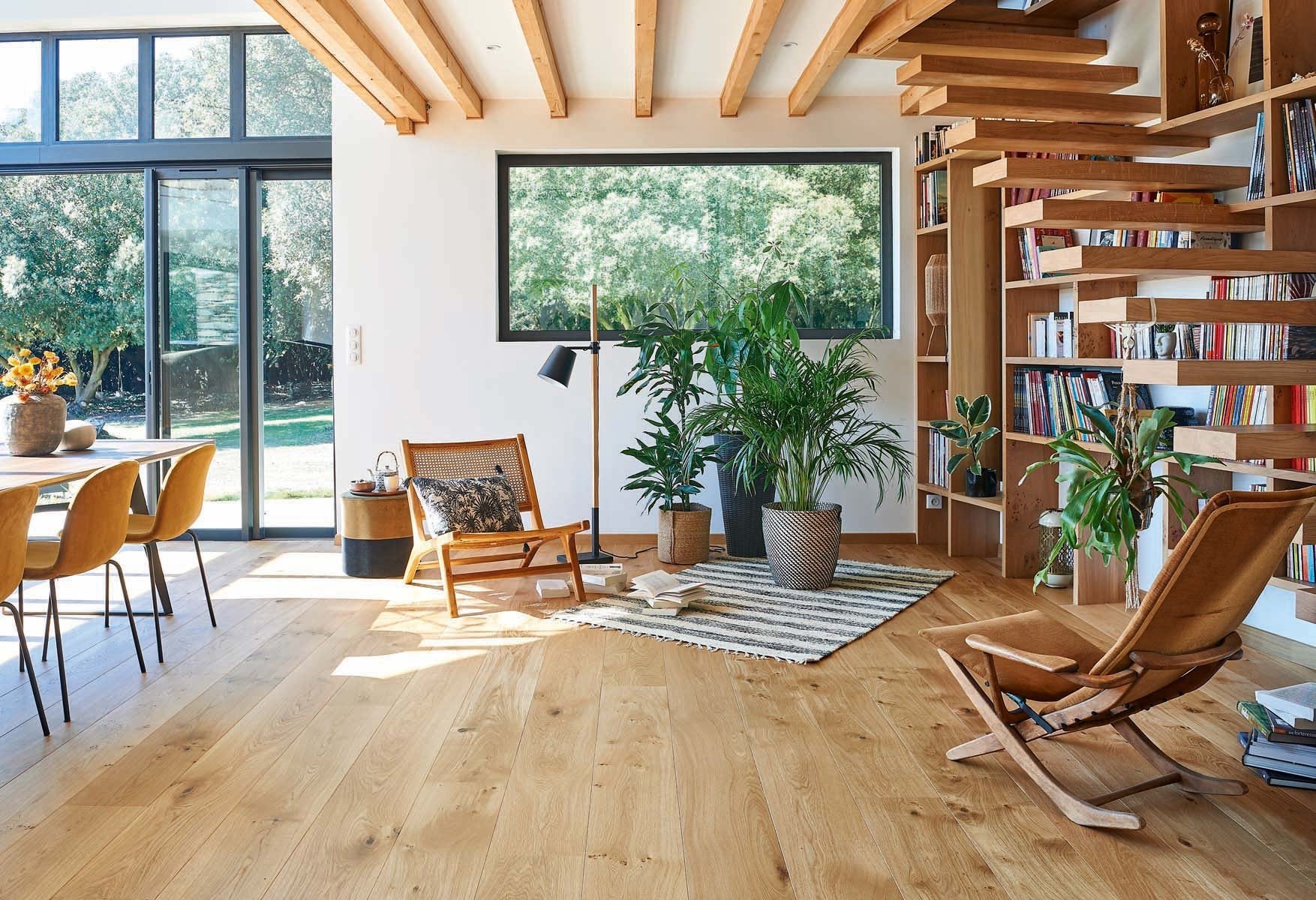In the realm of interior design, flooring serves as the foundation upon which the entire aesthetic of a space is built. It not only contributes to the overall look and feel but also plays a crucial role in functionality and comfort. With an array of modern flooring options available today, homeowners have the opportunity to elevate their spaces with style and practicality.
In this blog post, we’ll delve into some of the most popular and innovative flooring choices, guiding you through the selection process to help you make an informed decision for your home.
Hardwood Flooring:
Hardwood flooring exudes timeless elegance and warmth, making it a perennial favorite among homeowners. Whether you opt for classic oak, rich walnut, or exotic teak, hardwood floors add a touch of sophistication to any room.
With advancements in engineering, engineered hardwood has emerged as a popular alternative, offering greater durability and resistance to moisture fluctuations. Additionally, eco-conscious consumers can explore sustainable hardwood options sourced from responsibly managed forests.
Laminate Flooring:
Laminate flooring offers an affordable yet stylish alternative to hardwood. With its high-resolution photographic layer, laminate can mimic the look of natural wood, stone, or tile with remarkable realism.
Beyond aesthetics, laminate flooring is known for its durability, scratch resistance, and ease of maintenance, making it an ideal choice for high-traffic areas such as living rooms and kitchens. Modern laminate options also feature improved water resistance, making them suitable for moisture-prone spaces like bathrooms and basements.
Vinyl Flooring:
Vinyl flooring has undergone a renaissance in recent years, thanks to advancements in technology and design. Available in a wide range of colors, patterns, and textures, vinyl flooring offers versatility and affordability without compromising on style.
Luxury vinyl planks (LVP) and luxury vinyl tiles (LVT) have gained popularity for their realistic wood and stone visuals, as well as their water-resistant properties. Whether you prefer the look of hardwood, ceramic, or concrete, vinyl flooring provides endless design possibilities for any room in your home.
Tile Flooring:
Tile flooring remains a timeless option for bathrooms, kitchens, and entryways due to its unmatched durability and resistance to moisture. Ceramic and porcelain tiles offer a wide variety of shapes, sizes, and finishes, enabling homeowners to craft bespoke designs that mirror their taste. Whether opting for sleek subway tiles or intricate mosaic patterns, tile flooring can infuse your space with either understated elegance or bold drama.
To enhance comfort, contemplate integrating radiant heating systems beneath your tile floors, ensuring warmth throughout your home. With the assistance of waterjet cutting services, you can even achieve intricate and precise tile designs, adding a touch of sophistication to your living spaces.
Carpet Flooring:
While hard surfaces dominate many modern interiors, carpet flooring continues to hold its own, especially in bedrooms, family rooms, and home theaters where comfort is paramount. Today’s carpets come in a variety of fibers, from plush wool to durable nylon, offering options for every budget and lifestyle.
Additionally, advancements in stain resistance and eco-friendly manufacturing processes have made carpets a more sustainable choice for environmentally conscious consumers. With endless colors, textures, and patterns to choose from, carpet flooring allows you to express your style while enhancing the comfort and coziness of your home.
Bamboo Flooring:
Bamboo flooring has gained popularity for its eco-friendly properties and unique aesthetic appeal. As a rapidly renewable resource, bamboo is considered a sustainable alternative to traditional hardwoods.
Bamboo flooring is known for its strength, hardness, and natural beauty, with a distinctive grain pattern that adds character to any room. Available in a variety of shades, from light natural tones to rich espresso hues, bamboo flooring offers versatility and durability for modern homes.
In Conclusion
Modern flooring options offer a wealth of choices for homeowners seeking to enhance their living spaces with style, durability, and functionality. Whether you prefer the timeless charm of hardwood, the affordability of laminate, the versatility of vinyl, the durability of tile, the comfort of carpet, or the sustainability of bamboo, there’s a flooring solution to suit every taste and lifestyle.
By exploring the diverse range of materials, colors, and textures available, you can create a customized look that reflects your personality and transforms your home into a haven of beauty and comfort.
